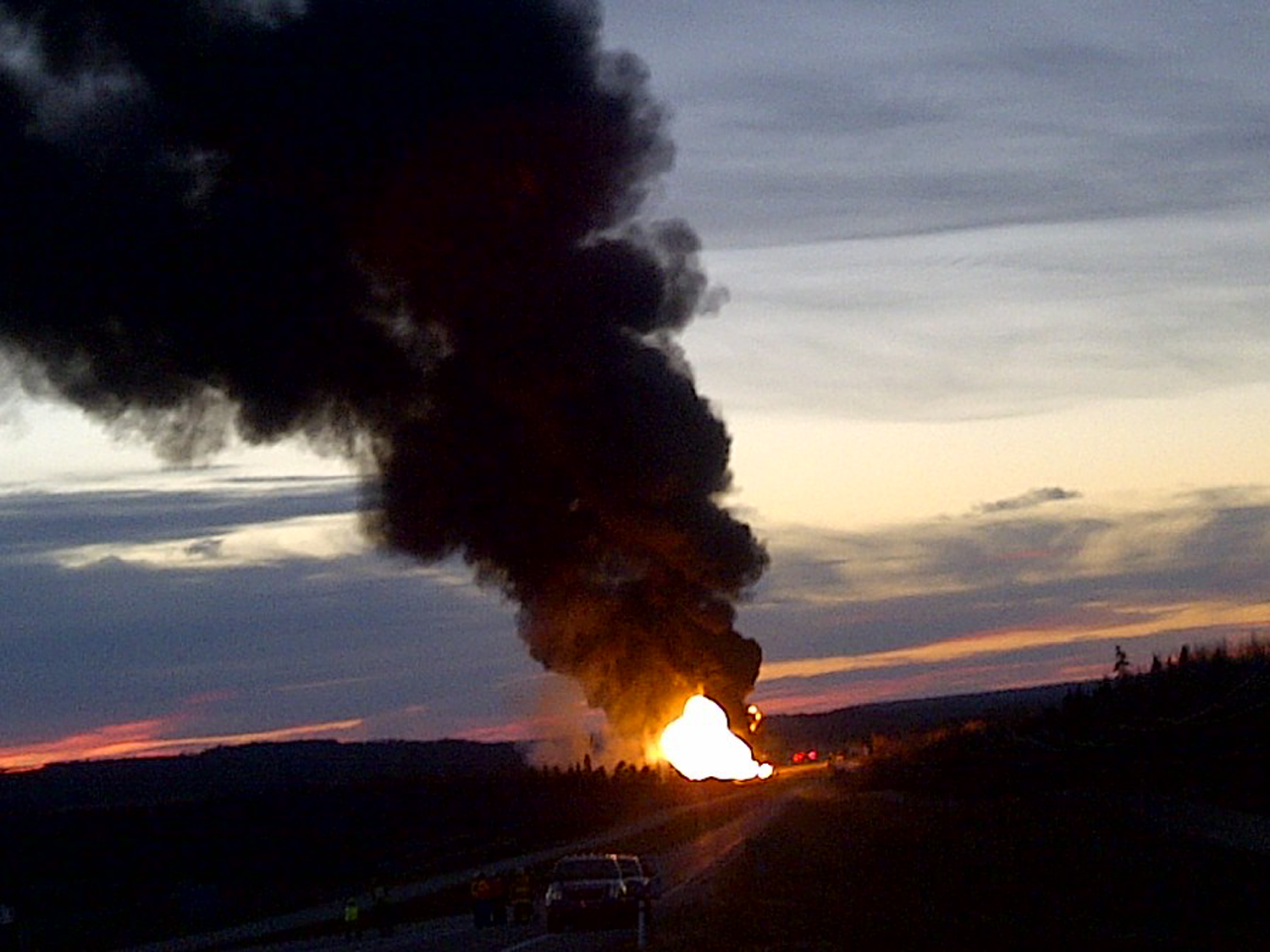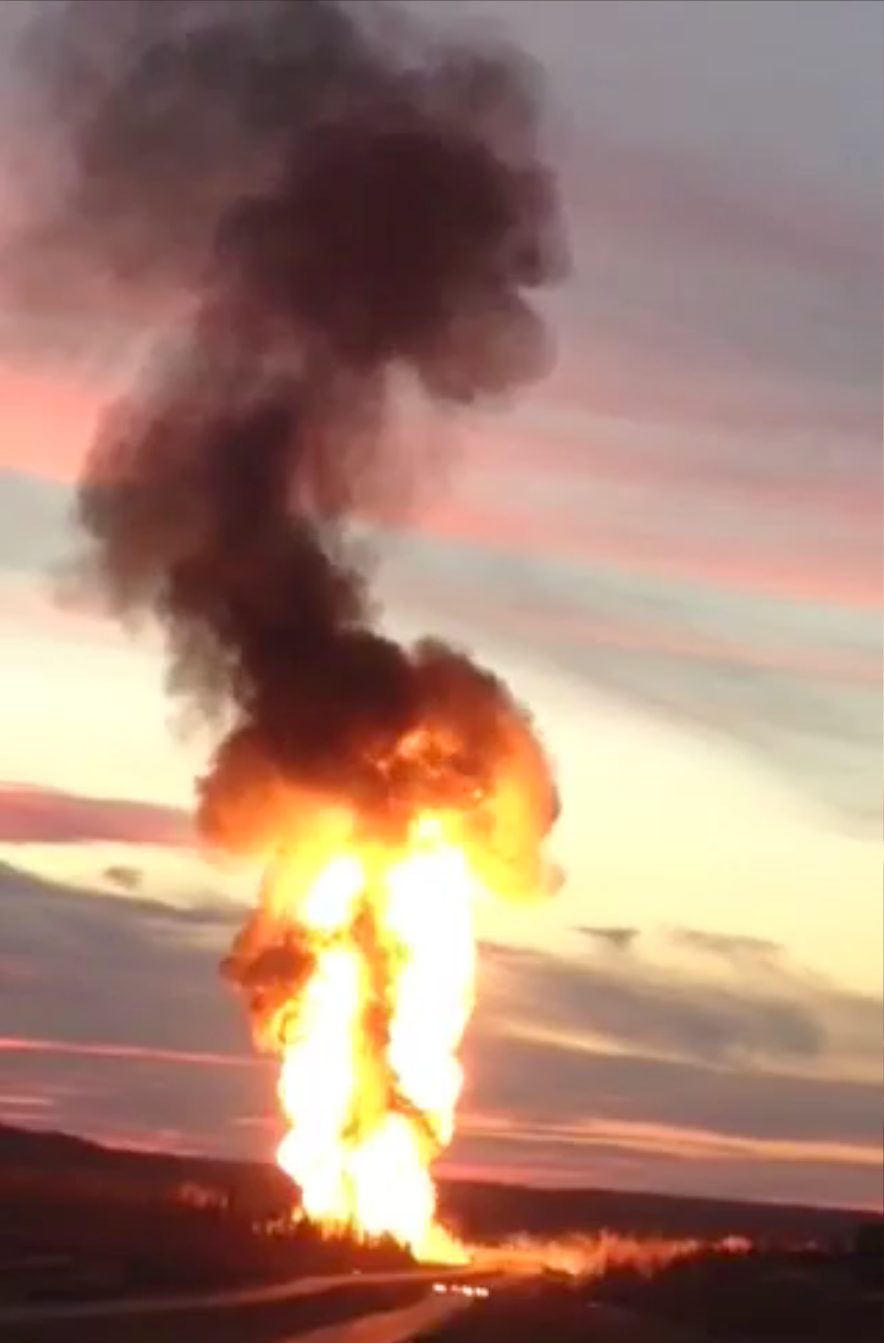Non main-track derailment
Canadian National
Freight train M30151-18
Mile 57.25, Edson Subdivision
Gainford, Alberta
The occurrence
On 19 October 2013, at 0100 Mountain Daylight Time, Canadian National Railway Company freight train M30151-18, proceeding westward from Edmonton, Alberta, to Vancouver, British Columbia, derailed 13 cars, including 4 tank cars containing petroleum crude oil and 9 tank cars of liquefied petroleum gas (LPG), at Mile 57.25 of the Edson Subdivision, near Gainford, Alberta. Of the derailed LPG tank cars, 2 were breached and caught fire. A third LPG tank car released product from the safety valve and ignited. About 600 feet of track was destroyed. There were no injuries. A total of 106 homes in the vicinity of the derailment were evacuated.
Media materials
News releases
Rail fractures and undetected rail defects led to October 2013 derailment and fire involving a CN train in Gainford, Alberta
Read the news release
Deployment notice
Transportation Safety Board of Canada deploys a team of investigators to a rail accident in Gainford, Alberta
The Transportation Safety Board of Canada (TSB) deploys a team of investigators to the site of a rail accident west of Edmonton in Gainford, Alberta. The CN train derailed 13 cars including 4 units carrying
Investigation information
Download high-resolution photos from the TSB Flickr page.
Class of investigation
This is a class 3 investigation. These investigations analyze a small number of safety issues, and may result in recommendations. Class 3 investigations are generally completed within 450 days. For more information, see the Policy on Occurrence Classification.
TSB investigation process
There are 3 phases to a TSB investigation
- Field phase: a team of investigators examines the occurrence site and wreckage, interviews witnesses and collects pertinent information.
- Examination and analysis phase: the TSB reviews pertinent records, tests components of the wreckage in the lab, determines the sequence of events and identifies safety deficiencies. When safety deficiencies are suspected or confirmed, the TSB advises the appropriate authority without waiting until publication of the final report.
- Report phase: a confidential draft report is approved by the Board and sent to persons and corporations who are directly concerned by the report. They then have the opportunity to dispute or correct information they believe to be incorrect. The Board considers all representations before approving the final report, which is subsequently released to the public.
For more information, see our Investigation process page.
The TSB is an independent agency that investigates air, marine, pipeline, and rail transportation occurrences. Its sole aim is the advancement of transportation safety. It is not the function of the Board to assign fault or determine civil or criminal liability.



